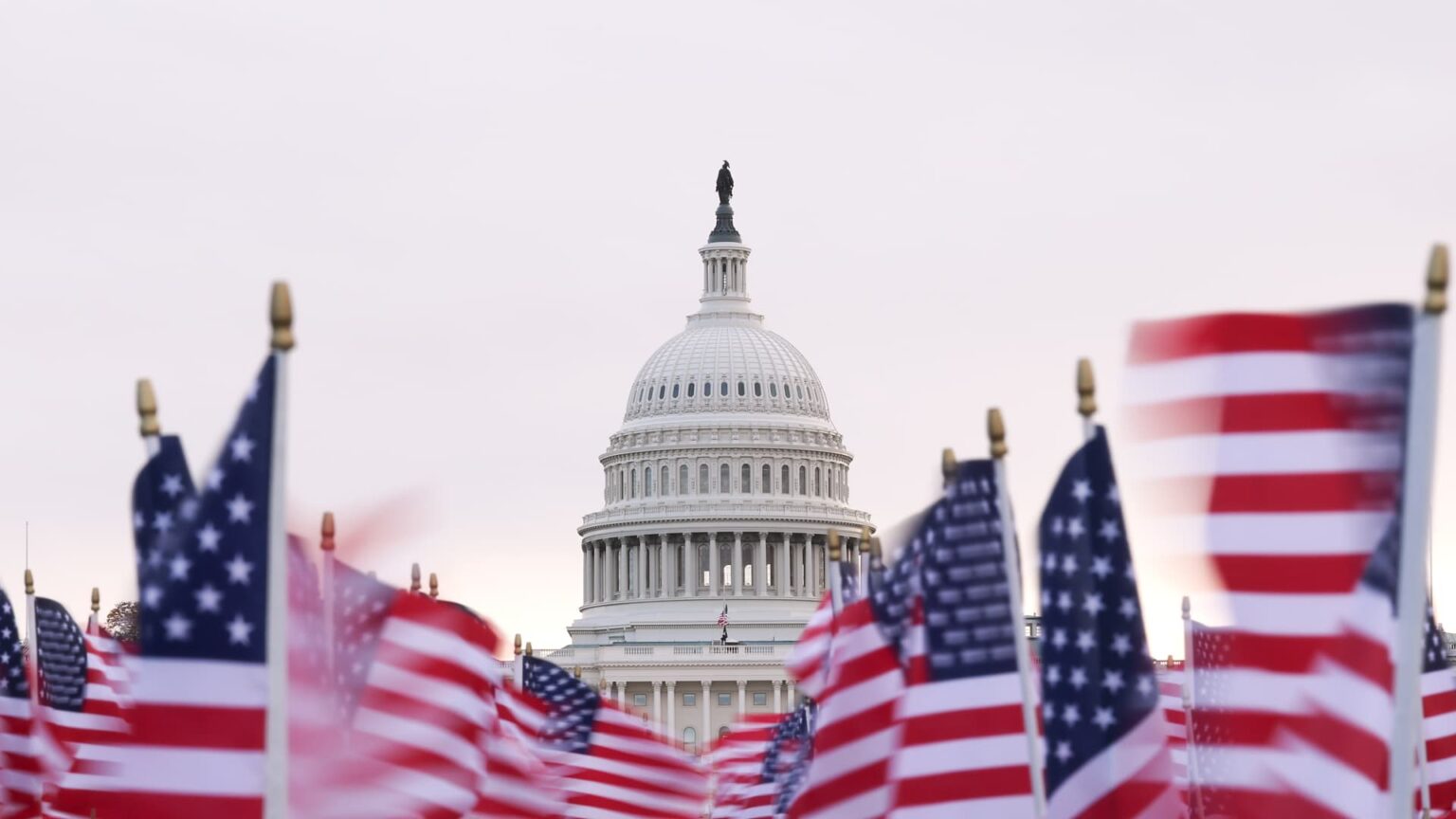The U.S. Capitol is shown the morning after the Senate passed legislation to reopen the federal government on Nov. 11, 2025 on Capitol Hill in Washington, DC.
Win McNamee | Getty Images
The Senate Agriculture Committee has released a draft of its portion of a much-awaited digital assets market structure bill — a critical step toward accelerating institutional and retail adoption of cryptocurrencies.
Unveiled on Monday by Agriculture Chair John Boozman, R-Ark., and Sen. Cory Booker, D-N.J., the bipartisan discussion draft lays the groundwork for creating guardrails for the crypto industry in the U.S. It also establishes guidelines for institutions that want to work with digital assets, from bitcoin and ether to tokenized financial instruments.
“This is the most consequential roadmap for how an institution is going to integrate digital assets into their business,” Cody Carbone, CEO of crypto trade association Digital Chamber, told CNBC. “It’s like the best possible step-by-step of what type of compliance rules requirements they would need to follow to work with crypto.”
Here are five key takeaways from the discussion draft.
1. Grants favorable regulatory status to some cryptocurrencies
The text classifies some of the largest digital assets by market capitalization such as bitcoin and ether as “digital commodities,” placing them under the Commodity Futures Trading Commission’s purview.
This provision removes a major blocker to digital asset adoption for institutional fiduciaries, Juan Leon, an analyst at crypto-focused asset manager Bitwise, told CNBC.
“Compliance and risk departments will finally have a federal statute to point to,” Leon said. “This shifts the internal conversation … [and] it provides the legal certainty required to move assets into a formal, strategic allocation.”
It will also create “a starkly bifurcated market” consisting of regulated and unregulated tokens, with the former class of assets seeing “a massive influx of institutional capital, deep liquidity and a robust derivatives ecosystem.”
2. Requires crypto firms to segregate funds and manage conflicts of interest
The draft calls for crypto companies to “establish governance, personnel, and financial resource separation among affiliated entities that perform distinct regulated functions.”
Bitwise’s Leon interprets the provision as a challenge to the “all-in-one” business model that is common among crypto exchanges. According to those models, an exchange, broker, custodian, and proprietary trading desk are all wrapped up into one entity.
In other words, digital asset firms could be required to keep their various businesses separated like traditional financial companies, according to Leon. The change would serve as “a foundational pillar for institutional adoption.”
3. Gives the CFTC more power to regulate digital assets
The text gives more power to the CFTC, empowering it to work in tandem with the Securities and Exchange Commission to issue joint rulemaking on crypto-related matters.
“There’s a lot more power or authority delegated to the CFTC to have jurisdiction over this industry,” Carbone said.
The shift comes after the SEC for years served as the main regulator of digital assets, after it edged out the CFTC to gain authority over the industry.
4. Allows the CFTC to collect fees
The draft calls for regulated entities to pay fees to the CFTC. Those fees would go toward registering digital commodity exchanges, brokers and dealers, in addition to conducting oversight of regulated entities and carrying out education and outreach.
5. Establishes listing standards for tokens
The text calls for crypto exchanges to only permit trading of digital commodities that are “not readily susceptible to manipulation.”
It’s a provision that could reduce the number of “rug pulls” and other scams that are still common in some parts of the crypto industry, with the goal of establishing standards and building confidence in the market.
What’s next?
The Senate Agriculture Committee’s discussion draft is far from final, but it does offer critical insights into the direction of efforts to pass crypto-friendly regulations in the U.S., according to Carbone.
“It’s not final, it’s not done, but this gives a good sense of where Congress is going and what the final rules may be,” Carbone said.
The committee will likely spend the next few weeks getting feedback on their draft, meaning it may be “almost impossible to get [a final version of this part of the bill] done by the end of the year,” he added.
However, that period will give lawmakers time to offer more concrete guidance on several issues that are bracketed – or not yet finalized – in the discussion draft. Those include provisions on anti-money laundering rules and regulations specific to decentralized finance players.
Several crypto players plan to work in tandem with lawmakers to help iron out those details, among others.
“We’ve long said crypto is a bipartisan issue, and this draft from Chairman Boozman and Senator Booker reflects that,” Moonpay President Keith Grossman told CNBC. “It’s critical that legislation distinguishes between centralized intermediaries and decentralized systems, and we look forward to working with the Committee to get it right.”
The discussion draft is only one piece of larger legislative efforts to overhaul regulations for the crypto industry, according to Carbone. Ultimately, the text will be combined with the Senate Banking Committee’s draft on the digital assets market structure in a bid to create one comprehensive bill.
And although lawmakers are nowhere near the finish line in that process, crypto firms are finding other ways to work with regulators and other authorities to meaningfully advance their industry, Grayscale Investments Chief Legal Officer Craig Salm told CNBC.
“In the absence of comprehensive legislation, we’ve still seen meaningful progress on the regulatory front,” Salm said, adding that the SEC, Internal Revenue Service and Treasury Department have recently provided guidance around staking in crypto exchange-traded products. “That said, thoughtful legislation will be critical to solidifying the foundation of the digital asset industry in the U.S. and unlocking even greater value for investors and consumers.”
https://www.cnbc.com/2025/11/11/five-takeaways-from-the-release-of-a-much-awaited-crypto-market-structure-bill.html


